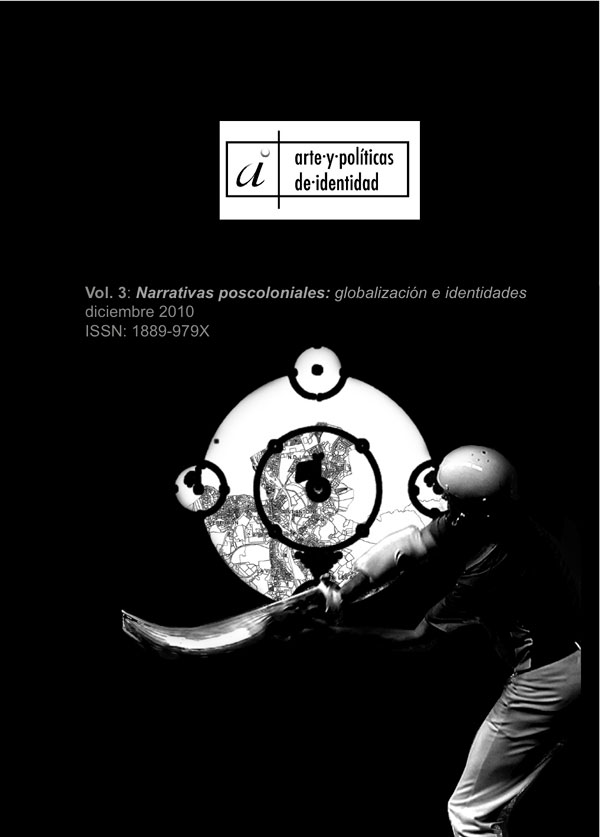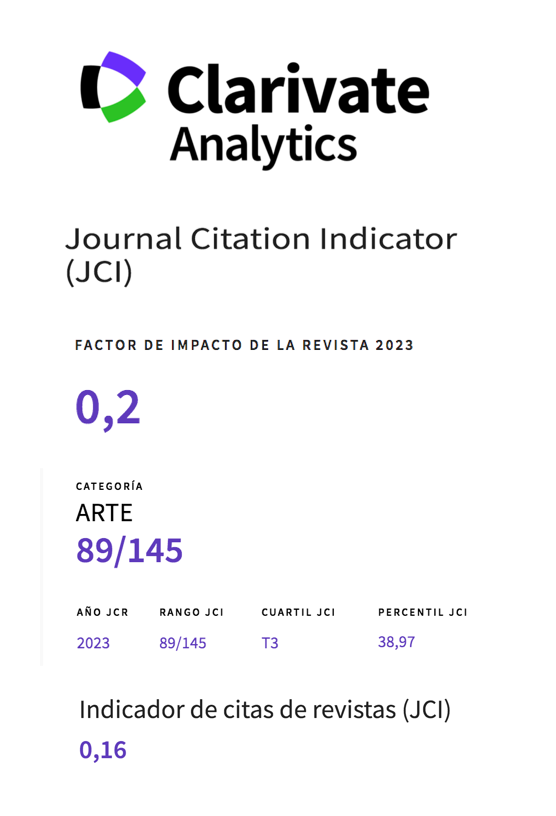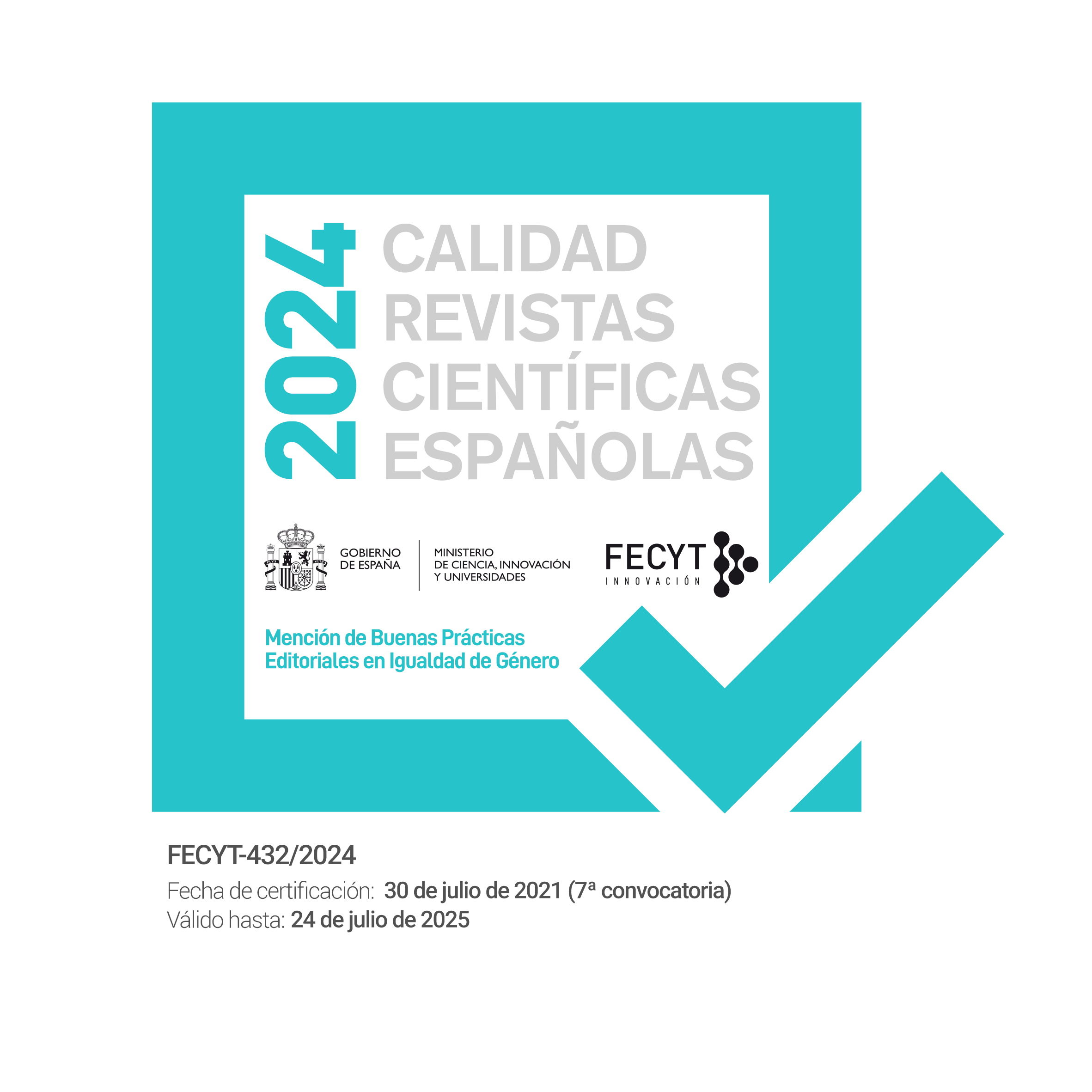Interaction, Interpretation and Implication as Creative Participatory Strategies. Time Divisa by Antonio Vega Macotela
Abstract
Participation of the art viewer in the coproduction of meaning has transferred focus of the work as an object to the processes generated through the encounter between the viewer and the piece of art. This essay is centred in the research of what Anglo-Saxon art theory refers to as participatory art (arte participativo in Spanish), a type of artistic production that requires dynamism by the viewer in assuming a more active responsibility in the process of aesthetic reception, converting the piece in a communicative action in which the viewer is converted, at the same time, into a transmitter fostering new interactive processes between the artist, the piece and the viewer. Our approach to participatory art considers the viewer both as the starting and the termination point, analyzing the role as producer and the artistic and social consequences implied in this new role; participatory reception requires physical, mental and/or social involvement of the receiver in order to trigger his or her creative capacities to conform new material or non-material artistic structures.Downloads
-
Abstract3253
-
PDF (Español (España))3530
References
Bishop, C. (Ed.). (2006). Participation. Cambrige, Massachussets: MIT Press
Bodemann-Ritter, C. (1995). Joseph Beuys cada hombre, un artista. Madrid: Editorial Visor.
Collado, E. (4 de agosto de 2008). Deconstructing Cinema. Revisado del blog Paracinema, http://paracinema.blogspot.com
Duchamp, M. (1978). Duchamp. Escritos. Barcelona: Gustavo Gili, S.A.
Eco, U. (1979). Obra abierta. España: Editorial Ariel.
Ehrenzweig, A. (1973). El orden oculto del arte. Barcelona: Editorial Labor.
---------(1976). Psicoanálisis de la percepción artística. Barcelona: Editorial Gustavo Gili.
Gadamer, H. G. (1991). La actualidad de lo bello. Barcelona: Paidós.
-------(1998). Arte y verdad de la palabra. Barcelona: Paidós
-------(2006a).Estética y hermenéutica. Madrid: Tecnos, Alianza, Colección Metrópolis.
-------(2006b).Verdad y Método I. Salamanca: Ediciones Sígueme.
-------(2006c). Verdad y Método II. Salamanca: Ediciones Sígueme.
Giménez, M. y Romero, A. Richard Serra. Revisado el 15 de agosto de 2008 de http:/www.deartesypasiones.com.ar
Hauser, A. (1974). Origen de la literatura y del arte moderno. Madrid: Editorial Guadarrama.
Hauser, A. (1975). Fundamentos de la sociología del Arte. Madrid: Editorial Guadarrama.
-------(1976).Historia social de la literatura y el arte. Madrid: Editorial Guadarrama.
Iser, W. (1987). El proceso de lectura: un enfoque fenomenológico. Estética de la recepción (pp. 215-243). Madrid: Arco Libros, S.A.
Jauss, H. R. (2002). Pequeña apología de la experiencia estética. Barcelona: Ediciones Paidós.
Kluge, A. y Negt, O. (2001). Esfera pública y experiencia. Hacia una análisis de las esferas públicas burguesa y proletaria. En Paloma Blanco, Jesús Carrillo, Jordi Claramonte y Marcelo Expósito (Eds.), Modos de hacer. Arte crítico, esfera pública y acción directa (pp. 227-271). Salamanca: Ediciones Universidad de Salamanca.
Lacy, S. (Ed.). (1995). Mapping the Terrain. New Genre Public Art. Seattle: Bay Press.
Lowe, D. (1986). Historia de la percepción burguesa. México: Fondo de Cultura Económica.Merlau-
Ponty, M. (1997). Fenomenología de la percepción. Barcelona: Ediciones Península.
Molina, A. (2010), Hacia la interpasividad en el arte. Papeles perdidos. El País. 10 de Mayo 2010.
Molina Alarcón, M. (2002a). La ciudad asediada: Arte público comprometido y movimientos vecinales de Valencia. Dossier Comunidad Valenciana. Barcelona: Ars Nova.
-------(2002b). El Manipulador manipulado: Nuevas estrategias de dominación en la red informática. Valencia: Laboratorio de Creaciones Intermedia. Departamento de Escultura, Universidad Politécnica de Valencia
-------(2003). La escultura en el cine: Aplicación didáctica y creativa del cine de animación al campo escultórico. Valencia: Editorial de la Universidad Politécnica de Valencia.
Nancy, J. L. (2006). The Inoperative Community. En C. Bishop (Ed.), Participation (pp. 54-69). Cambrige: MIT Press.
Popper, F. (1989). Arte, acción y participación. El artista y la creatividad hoy. Madrid: Ediciones Akal.
Vega Macotela, A. (2010), Mexican Rashes. Revisado el 29 de agosto de 2010 de http://www.viceland.com
VV. AA. (1987). Estética de la recepción. Madrid: Arco Libros, S.A.
Works published in this journal are subject to the following terms:
- The Service of Publications from the University of Murcia (publishing house) keeps the published works’ copyrights, and favors and allows the reuse of these works under the license indicated in point 2.
- Works are published in the journal’s online edition under the license Creative Commons Reconocimiento-NoComercial-SinObraDerivada 3.0 España(texto legal). They can be copied, used, disseminated, transmitted and publicly exhibited, as long as: i) the author and original source of publication are cited (journal, publishing house and work’s URL); ii) they are not used for commercial purposes; iii) the existence and specifications of this license are mentioned.
3. Conditions for auto-file. It is allowed and encouraged that authors share electronically their pre-print version (the pre-reviewed version) and /or post-print version (the reviewed and accepted version) of their Works before the publication, since it promotes its circulation and dissemination. RoMEO color: green.










